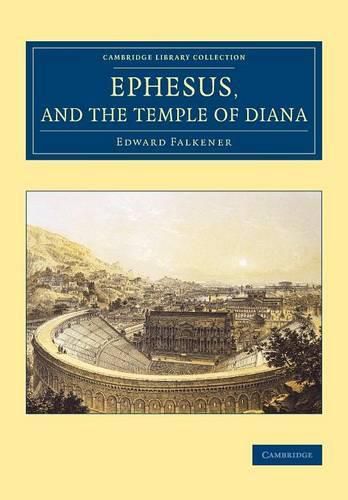Readings Newsletter
Become a Readings Member to make your shopping experience even easier.
Sign in or sign up for free!
You’re not far away from qualifying for FREE standard shipping within Australia
You’ve qualified for FREE standard shipping within Australia
The cart is loading…






The English architect and archaeologist Edward Falkener (1814-96) spent a fortnight sketching the ancient ruins of Ephesus during his trip through Anatolia in the 1840s. In Part I of this 1862 publication, he tries to reconstruct the architectural features of Ephesian buildings, tracing the history of the city. Falkener’s accomplished sketches and layouts display his artistic talent, which won him the grand medal of honour at the Paris Universal Exhibition in 1855. Part II focuses on the Temple of Artemis, one of the seven wonders of the ancient world. Falkener surveys ancient writings relating to the Greek temple, which still awaited rediscovery at that time. Although his speculations about the location of the temple were later proven wrong by John Turtle Wood, who correctly identified the site in 1869 (his 1877 account is also reissued in this series), Falkener’s work added to the Victorian interest in ancient architecture.
$9.00 standard shipping within Australia
FREE standard shipping within Australia for orders over $100.00
Express & International shipping calculated at checkout
The English architect and archaeologist Edward Falkener (1814-96) spent a fortnight sketching the ancient ruins of Ephesus during his trip through Anatolia in the 1840s. In Part I of this 1862 publication, he tries to reconstruct the architectural features of Ephesian buildings, tracing the history of the city. Falkener’s accomplished sketches and layouts display his artistic talent, which won him the grand medal of honour at the Paris Universal Exhibition in 1855. Part II focuses on the Temple of Artemis, one of the seven wonders of the ancient world. Falkener surveys ancient writings relating to the Greek temple, which still awaited rediscovery at that time. Although his speculations about the location of the temple were later proven wrong by John Turtle Wood, who correctly identified the site in 1869 (his 1877 account is also reissued in this series), Falkener’s work added to the Victorian interest in ancient architecture.